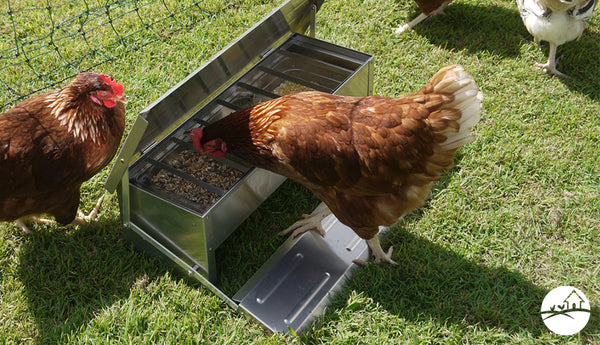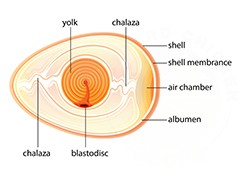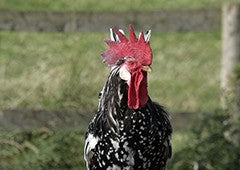Do you want to feed your chooks from a bucket, or a bell, or a treadle chicken feeder, trough or pipe? As a beginner to the world of backyard chicken keeping, it’s perfectly normal to feel overwhelmed by the enormous range of poultry accessories on the market. And nowhere is this more obvious than when it comes to chicken feeders. And why do you even need a feeder to begin with? Never fret - as always, we’re here to help.
Why do I even need a chicken feeder?
When chickens eat, they don’t mess around! It’s natural for a chook to scratch, claw and peck in search of the finest morsels of food they can find. This means that enormous amounts of feed can easily end up scattered on the ground, instead of in your chickens’ bellies where it belongs. All that scattered feed is an open buffet for pests and wild birds. So, unless you want to spend your money feeding the local rats, a secure feeder is a must.
What should I look for in a chicken feeder?
Before putting your trust in any feeder, you should judge it on the following criteria:
- Wastage - how is the feed kept in the container? Will your chooks be able to flick it out with ease, or does it have a curved lip, deep container, or other way of keeping feed off the floor.
- Pests-proofing - how secure is the feed? Is it easy for a rascally rodent or mischievous magpie to tuck in, or are there measures to prevent this?
- Water-proofing - is the feed covered, or will it get wet easily? Wet feed quickly becomes mouldy feed, and this contributes to waste.
- Cleanliness - similarly, is there some way to prevent feed from getting contaminated? Chickens scratch when eating (even when they don’t need to - crazy girls!) and that kicks up a lot of dirt. Some feeders also make for a tempting perching spot, which you’ll want to avoid, since food and poo aren’t a great mix.
- Stability - is the feeder stable? In all that activity, a rickety feeder can easily get knocked over.
- Capacity - how much food can be stored? An average chicken eats 400g of feed daily. You’ll want a feeder that can at least hold what they’ll eat in a day.
What kind of chicken feeders are out there, and why would you use them?
Every chicken feeder has its place, although some are clearly better than others in the ways that count. Here’s when you might consider each different type:
- If you’re budget conscious, you might simply use an open container, like a bucket, bowl or similar. However, these are open to pests, contamination, and are likely to waste enormous amounts of food as your girls eat. In the long run, even your wallet won’t thank you!
- If you have a lot of chooks, you might opt for a trough chicken feeder. These are great because they let a lot of your girlies eat at once. However, they create a lot of spillage if fully filled. If filled to minimise spillage, then you’ll find the capacity lacking. Lose-lose!
- If you have a small flock of cooped-up girls, a bell chicken feeder is a great option. They can be hung from their run to prevent spillage, and come in a variety of sizes to suit any flock.
- If you have a happy, flappy flock of free-ranging girls a treadle chicken feeder is brilliant. It is designed to open for your girls but keep pesky vermin out. A metal design will also be waterproof, so it won’t run for cover when it starts pouring!
- If you want to minimise feed re-supply, then a PVC chicken feeder has an egg-cellent capacity, and is somewhat secured from spillage. However, it can only be used by 1 girl at a time, so you’ll want to have a enough (feeders, and chooks).
You’ve heard about feeders, but what about coops? Click here to learn more on the most important part of the yard - the hen house.




















